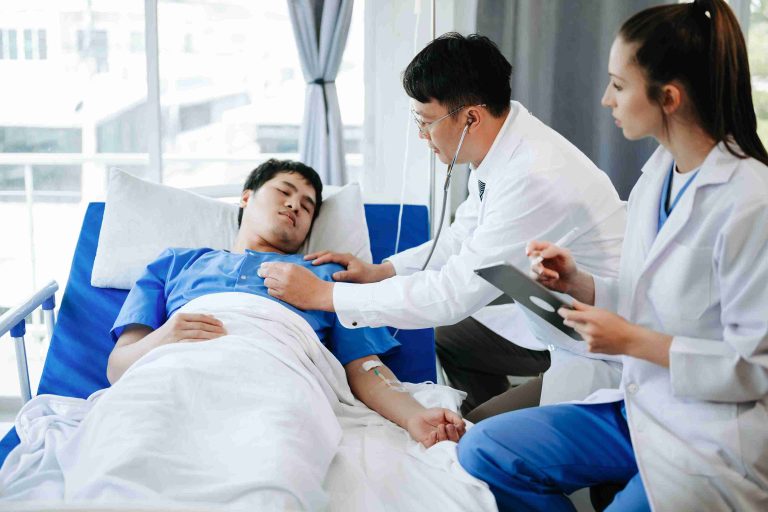Medical technology has advanced to the point where doctors can now see inside the body with minimal invasion. Among the most widely used diagnostic tools are endoscopic procedures. These allow specialists to insert a flexible tube with a light and camera into the body to view internal organs.
Two common terms patients often hear are “gastroscopy” and “endoscopy.” While they sound similar, they are not exactly the same. Understanding the overlap between these two procedures can help patients know what to expect when their doctor recommends one of them.
What Is an Endoscopy?
Endoscopy is a broad term that describes the use of a scope to look inside the body. The word comes from the Greek “endo,” meaning inside, and “skopein,” meaning to look.
During an endoscopy, a thin, flexible tube with a camera and light is inserted into the body through a natural opening or small incision. Images are displayed on a monitor, allowing doctors to closely examine tissues, organs, and structures.
Endoscopy is not limited to one part of the body. It can be used to examine the digestive tract, lungs, urinary system, joints, and even the brain. Common types include colonoscopy, bronchoscopy, laparoscopy, and gastroscopy.
What Is a Gastroscopy?
Gastroscopy is a type of endoscopy that specifically looks at the upper part of the digestive system. The term “gastro” refers to the stomach, making gastroscopy the procedure used to examine the esophagus, stomach, and the first part of the small intestine (duodenum).
In a gastroscopy, the doctor inserts the scope through the mouth and down the throat. The procedure helps detect ulcers, gastritis, tumors, and other problems affecting the upper gastrointestinal tract. Biopsies can be taken during the test, and in some cases, treatments such as removing polyps or stopping bleeding can also be performed.
Gastroscopy vs. Endoscopy: The Key Difference
The main difference between upper endoscopy and endoscopy lies in how the terms are used.
Endoscopy is the general technique of looking inside the body with a scope. Gastroscopy is one type of endoscopy that focuses only on the upper digestive tract. In other words, all gastroscopies are endoscopies, but not all endoscopies are gastroscopies.
This overlap often confuses patients, as doctors may use the words interchangeably. However, when a doctor specifically says “gastroscopy,” it usually means the test involves the esophagus, stomach, and duodenum rather than other body parts.
When Is Gastroscopy Recommended?
Gastroscopy is recommended when patients have symptoms that suggest problems in the upper digestive system.
Common reasons for a gastroscopy include persistent heartburn, difficulty swallowing, unexplained weight loss, vomiting blood, chronic stomach pain, and black or tarry stools. It is also used to monitor conditions such as Barrett’s esophagus or to investigate the cause of anemia that may be related to bleeding in the stomach or intestines.
Because gastrointestinal endoscopy allows both diagnosis and treatment, it is often the preferred option when upper digestive tract problems are suspected.
When Is Endoscopy Used More Broadly?
Endoscopy as a broader category is recommended for a wide range of conditions. A colonoscopy, which is a type of endoscopy, checks the large intestine for polyps, cancer, and inflammation. A bronchoscopy looks at the lungs and airways. Cystoscopy examines the bladder, while arthroscopy is used in joints such as the knee.
These procedures all use similar technology, but the purpose and location of examination vary. That is why understanding whether a doctor is referring to gastroscopy or another type of endoscopy is important for patients.
The Procedure: What Patients Can Expect
Although gastroscopy is a specific type of endoscopy, the procedure follows the same general steps as other endoscopic exams.
Patients are usually asked not to eat or drink for several hours before the test. A sedative or local anesthetic may be given to make the process more comfortable. During gastroscopy, the scope is inserted through the mouth, and air is gently pumped into the stomach to provide a clearer view.
The entire test typically takes less than 30 minutes. Afterward, patients may feel bloated or have a mild sore throat, but these symptoms usually pass quickly. Recovery depends on whether sedation was used, but most people can go home the same day.
Risks and Safety of Gastroscopy and Endoscopy
Both gastroscopy and other forms of endoscopy are considered safe, but as with any medical procedure, risks exist. Possible risks include bleeding, infection, and perforation of the organ being examined. The likelihood of complications is low, especially when performed by experienced specialists.
Sedation-related risks, such as breathing or heart problems, may also occur in rare cases. Patients are generally monitored closely throughout the procedure to ensure safety.
Advantages of Gastroscopy Over Other Tests
Gastroscopy offers several advantages over imaging tests such as X-rays or CT scans. One of the main benefits is that doctors can directly view the lining of the digestive tract rather than relying only on images.
Gastroscopy also allows for tissue samples (biopsies) to be taken and certain treatments to be performed immediately, such as removing growths or stopping bleeding. For patients with ongoing digestive symptoms, gastroscopy provides more detailed information than non-invasive imaging alone.
Alternatives to Gastroscopy
While gastroscopy is highly effective, some patients may not be able to undergo the procedure. Alternatives include barium swallow X-rays, CT scans, and capsule endoscopy, where a patient swallows a small camera inside a capsule.
These options can provide useful information but may not allow for biopsies or immediate treatment in the way that gastroscopy does. In many cases, if abnormalities are detected with these alternative tests, a gastroscopy may still be needed.
Overlap Between Gastroscopy and Other Endoscopic Procedures
The overlap between gastroscopy and other endoscopies lies in the technology used. All endoscopic procedures rely on a flexible tube with a light and camera. What differs is the area of the body being examined.
For instance, colonoscopy looks at the large intestine, bronchoscopy examines the airways, and cystoscopy checks the bladder. Gastroscopy is simply the version focused on the upper digestive tract. This overlap in technology and terminology often leads to confusion for patients, but understanding the specific target area clarifies the difference.
Preparing for Gastroscopy vs. Other Endoscopies
Preparation for gastroscopy usually involves fasting for at least six to eight hours. This ensures the stomach is empty, giving doctors a clear view.
For colonoscopy, preparation is more intensive, requiring bowel cleansing with special solutions. Bronchoscopy preparation may involve avoiding food and adjusting medications. Despite these differences, the general goal is the same: to make sure the area being examined is as clear and safe as possible.
Conclusion
Gastroscopy and endoscopy are terms that often overlap, but they are not identical. Endoscopy refers to the broad technique of using a flexible scope to view inside the body, while gastroscopy is a specific type of endoscopy focused on the esophagus, stomach, and duodenum.
Gastroscopy is recommended when symptoms suggest problems in the upper digestive tract, and it offers both diagnostic and therapeutic benefits. Endoscopy more broadly can examine many other parts of the body, from the colon to the lungs.
By understanding the overlap and distinctions between these procedures, patients can be better informed when discussing their options with healthcare providers. Gastroscopy remains one of the most valuable tools for investigating digestive problems, while endoscopy as a whole continues to transform modern medicine by making internal examinations safer and less invasive.






